Digital Poster
Spectroscopy in the Brain
ISMRM & ISMRT Annual Meeting & Exhibition • 10-15 May 2025 • Honolulu, Hawai'i

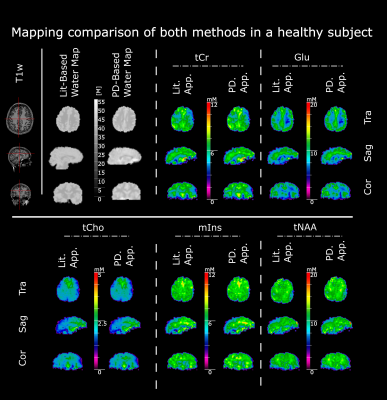 |
Computer Number: 49
2914. Tissue
Water Referencing with Proton Density in MRSI for Metabolic
Mapping at 7T
A. Azgin, P. Lazen, B. Dymerska, M. Callaghan, S. Robinson,
L. Hingerl, B. Strasser, W. Bogner, K. Rössler, S. Trattnig,
G. Hangel
Medical University of Vienna, Vienna, Austria
Impact: Using quantitative proton density maps as an
internal reference for MRSI enables to get concentration
estimates from not only healthy brains, but also in
pathological ones like brains with glioma.
|
|
 |
Computer Number: 50
2915. Double-DANTE-PRESS:
a multi-metabolite-selective 1H-MRS sequence for human brain
measurements of glutamate and glutathione at 7T
K. Kanagasabai, O. Oran, L. Palaniyappan, J. Theberge
Robarts Research Institute, London, Canada
Impact: Double-DANTE-PRESS is a single-shot
multi-metabolite-selective 1H-MRS sequence that can be used
to access neurotransmission involving glutamate and
glutathione with high precision and higher SNR efficiency
while simplifying spectral modelling.
|
|
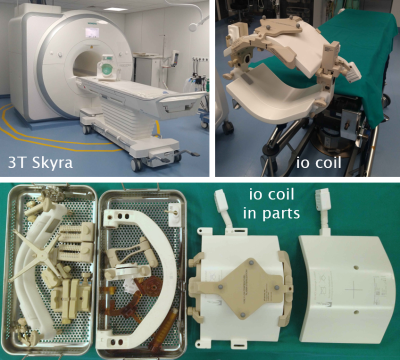 |
Computer Number: 51
2916. MR
Spectroscopy using the Intraoperative MR System
L. Pfleger, R. Flandorfer, M. Tomschik, K. Rössler, G.
Kasprian, G. Hangel
Medical University of Vienna, Vienna, Austria
Impact: Intraoperative MR spectroscopy (ioMRS) is
feasible and has been performed for the first time with an
sLASER sequence. Future implementation in MR-guided
laser-induced thermal therapy (MRgLITT) allows tracking of
metabolic changes due to LITT.
|
|
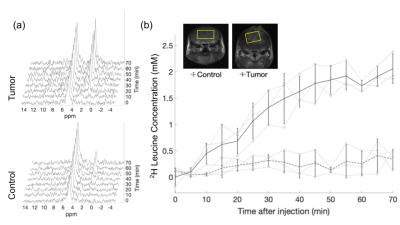 |
Computer Number: 52
2917. Dynamic
2H MRI-based quantification of leucine uptake in glioblastoma
S. McClendon, X. Ge, V. Kodibagkar, J. Garbow, S. Beeman
Arizona State University, Tempe, United States
Impact: This proof-of-concept 2H amino acid MR study
lays the foundation of a novel, accessible tool to directly
image GBM tumors independent of BBB disruption.
|
|
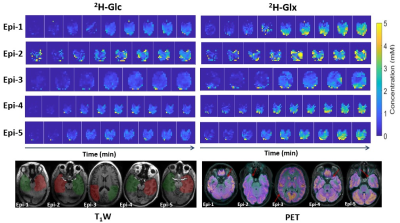 |
Computer Number: 53
2918. Deuterium
metabolic imaging in epilepsy patients at 7T
N. Ahmadian, R. Buijs, M. Konig, M. Gosselink, P. van
Eijsden, S. Otto, K. Tesselaar, J. Prompers, D. Klomp, E.
Wiegers
University Medical Center Utrecht, Utrecht, Netherlands
Impact: Dynamic DMI offers a non-invasive approach to
assess epilepsy metabolism. Although this study observed no
metabolic differences between the epileptogenic-zone and
contralateral normal-appearing brain tissue interictally,
DMI should be considered for direct post-ictal imaging,
potentially aiding diagnosis in MRI-negative epilepsy.
|
|
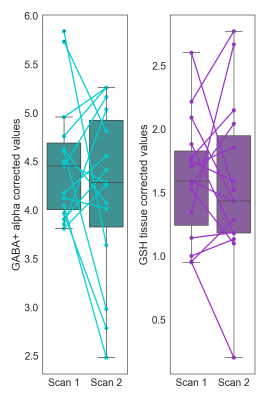 |
Computer Number: 54
2919. Reproducibility
of HERMES-measured GABA+ and GSH in the Mesial Temporal Lobe
M. DeMayo, M. Botros, T. Bell, M. Mikkelsen, V. Mosher, A.
George, P. Federico, A. Harris
University of Calgary, Calgary, Canada
Impact: This study quantifies the reproducibility of
HERMES-sLASER in the challenging region of the mesial
temporal lobe. These results show that this technique can be
used to measure multiple metabolites by editing them
simultaneously and provides guidance on expected effect
sizes.
|
|
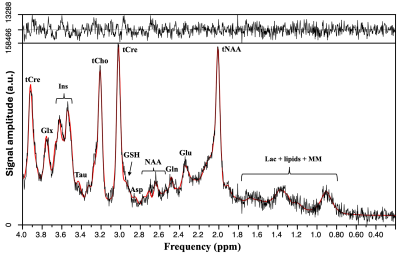 |
Computer Number: 55
2920. Feasibility
of in vivo metabolic profiling in the human brainstem
periaqueductal gray matter by 1H-MRS at 7T
P. Veeraiah, S. Schins, K. Brouwers, J. van Asten, J. van
den Hurk, J. Wildberger, T. Scheenen, J. Prompers
Scannexus (Ultra-high field MRI center), Maastricht, Netherlands
Impact: This study demonstrates the feasibility of in
vivo metabolic profiling of the small, deeply embedded
PAG region using 1H-MRS
at 7T, which has potential for advancing our understanding
of PAG's critical role, in both health and disease.
|
|
 |
Computer Number: 56
2921. Neurochemical
changes following chemogenetic activation in the dorsal striatum
of mice detected by 1H magnetic resonance spectroscopy
E. Baetscher, T. Carlson, J. Thomas, V. Cuzon Carlson, C.
Kroenke
Oregon Health & Science University, Portland, United States
Impact: Our results suggest that magnetic resonance
spectroscopy provides noninvasive measurement of changes to
glutamate and GABA following acute chemogenetic activation.
This presents new opportunities for the optimization of
experiments and improved interpretation of results for
studies utilizing chemogenetic techniques.
|
|
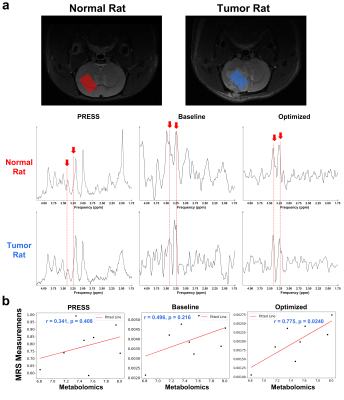 |
Computer Number: 57
2922. In-vivo
measurement of taurine with optimized double-quantum-filter
technique in human, normal and glioma animal model
Y. Zhou, Y. Cao, X. Zhu, K. Zhou, S. Chen, C. Cai, J. Zhou,
F. Chen, D. Lin, Y-C Hsu, M. Wang
College of Biomedical Engineering and Instrument Science, Zhejiang University , Hangzhou, China
Impact: This
study optimized the taurine detection technique, and
provided a more reliable method for in-vivo measurement of
taurine at low field strengths, which provides a
non-invasive tool for clinical research of neuromodulation.
|
|
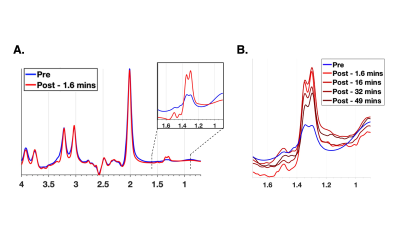 |
Computer Number: 58
2923. Lac+
Clearance Measured in Brain After Exercise with 1H-MRS
R. Armbruster, M. Elliott, P. Jacobs, B. Benyard, N. Wilson,
R. Reddy
University of Pennsylvania, Philadelphia, United States
Impact: Brain Lac+/Water clearance can be measured in
healthy humans after intense-exercise. While the blood
lactate literature suggests that larger increases in lactate
correlate with faster recovery times, our results indicate
that brain Lac+ recovery may be influenced by additional
factors.
|
|
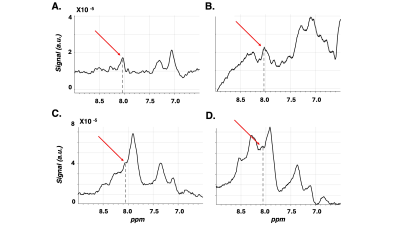 |
Computer Number: 59
2924. Homocarnosine
Spectral Editing in the Human Brain: Repeatable Brain pH
Measurements at 3T with 1H-MRS
R. Armbruster, N. Wilson, M. Elliott, S. Swago, W. Witschey,
R. Reddy
University of Pennsylvania, Philadelphia, United States
Impact: We employ a long TE method that leverages the
signal differences between homocarnosine and downfield NAA
based on their T2 decay
and NAA’s J-evolution which enables us to repeatably measure
homocarnosine and approximate pH.
|
|
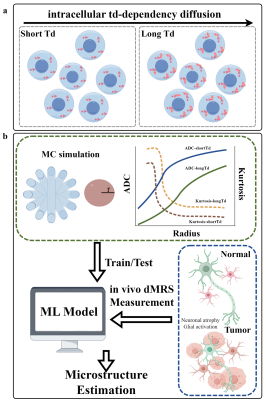 |
Computer Number: 60
2925. Probing
tumor microenvironment with time-dependent diffusion MRS and
machine learning based modeling in C6 Glioma
K. Zhou, Z. Wang, Y. Cao, X. Zhu, Y. Zhou, Y. Liu, C. Cai,
Y-C Hsu, S. Chen, M. Wang
Key Laboratory for Biomedical Engineering of Ministry of Education, College of Biomedical Engineering and Instrument Science, Zhejiang University, Hangzhou, China
Impact: This work provides a unique insight into the
Td-dependency of intracellular metabolites and water to
probe the microstructural changes during the pathological
tumor progression, which helps revealing spatial structural
and metabolite profile to address the complexity of the TME.
|
|
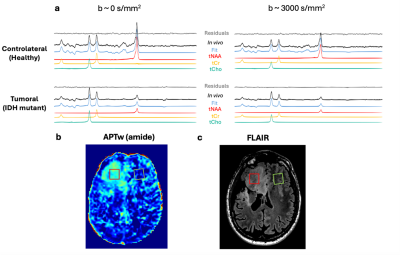 |
Computer Number: 61
2926. Exploring
intracellular environment in low-grade gliomas by
diffusion-weighted MRS and APTw imaging at 3T
C. Cadin, S. Casagranda, L. Nichelli, B. Mathon, M. Sanson,
S. Lehéricy, M. Marjanska, F. Branzoli
Paris Brain Institute - ICM, INSERM U 1127, CNRS UMR 7225, Sorbonne University, Paris, France
Impact: Developing noninvasive biomarkers that are
specific to the intracellular environment may help improving
our understanding of glioma pathophysiology and mechanisms
of progression, which ultimately will benefit diagnostic
precision and adoption of optimal therapeutic strategies.
|
|
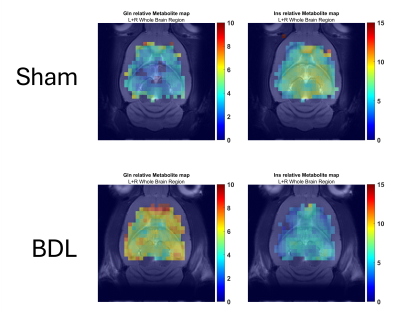 |
Computer Number: 62
2927. Mapping
brain regional differences in young rats with chronic liver
disease using fast 1H-FID-MRSI at 9.4T
G. Nossa, B. Alves, T. Phong Lê, D. Sessa, S. Mitrea, J.
Mosso, B. Lanz, V. McLin, C. Cudalbu
CIBM Center fro Biomedical Imaging, Lausanne, Switzerland
Impact: Our study demonstrated the potential of
1H-FID-MRSI at 9.4T to detect and map metabolic changes in
the developing brain in a rat model of chronic liver
disease, specifically regional differences and changes in
Gln due to individual response to disease.
|
|
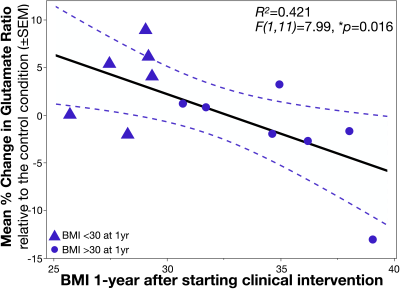 |
Computer Number: 63
2928. Glutamate
modulation in the dACC during inhibitory control with food-cues
using 1H fMRS predicts BMI following weight loss
J. Eichstaedt, R. Sochocki, D. Khatib, N. Miller, V.
Diwadkar, P. Burghardt, A. Rothberg, J. Stanley
Wayne State University, Detroit, United States
Impact: With
further research, this evidence of food-cue specific
differences in glutamate modulation predicting long-term BMI
may fuel better behavioral treatment plans to support more
successful long-term weight loss maintenance in individuals
with obesity.
|
|
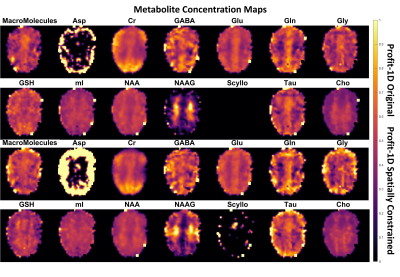 |
Computer Number: 64
2929. Introducing
Spatial Prior Knowledge Into ProFit-1D – A Spectral Fitting
Strategy for MRSI
Y. Rodriguez, M. Jani, A. Wright, K. Chan, A. Henning
University of Texas Southwestern Medical Center, Dallas, United States
Impact: The results of this study are promising for
improving the interpretability of MRSI data. Our approach
managed to improve the reproducibility of our quantification
results and is translatable to a wide range of spectral
fitting strategies.
|
The International Society for Magnetic Resonance in Medicine is accredited by the Accreditation Council for Continuing Medical Education to provide continuing medical education for physicians.